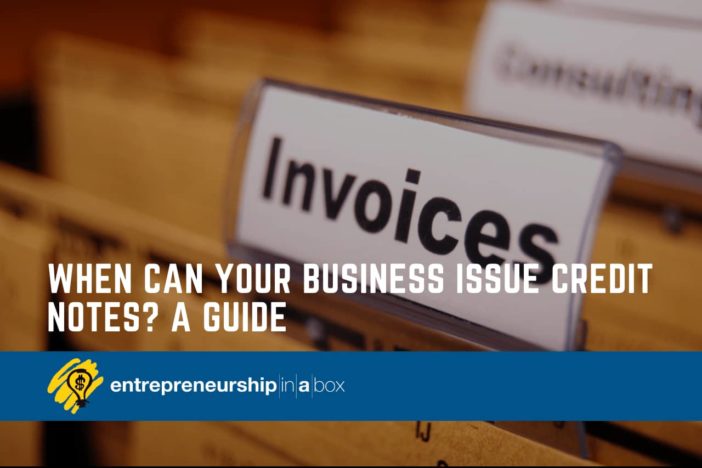While credit notes may not be used on a daily basis, they’re an invaluable tool to have when you’re a business that regularly deals with a high volume of invoices. In fact, they can play a huge role in keeping your invoices in the order in case of an unexpected error or customer complaint.
Unfortunately, as they aren’t frequently used, there are a lot of misconceptions and assumptions about when and where you can use a credit note. But with this simple and easy-to-follow guide, you’ll see past the confusion and find the true benefits of credit notes, and have a better idea of how they can be of use to your business in the process.
As soon as you understand what to include in your credit notes and when you should be using them, your business can immediately begin to benefit from them. Do you want to discover how to help your invoicing to stay on track, and prevent costly errors from occurring?
With this guide to making a credit note, you can resolve invoice issues quicker and with less potential damage to your company and brand reputation.
Understanding what a credit note is
Despite best efforts and intentions, everyone is going to make a mistake at some point in their administrative processes. But what happens when those mistakes occur during an invoice? And how are you going to remedy that error without doing something illegal like completely deleting the invoice itself?
Credit notes, much like standard invoices, are legal documents. But with a credit note, you have the ability to cancel out some of the information and funds already issued in your invoice. Sometimes that can be just a minor cancellation or change, and sometimes, it can be a fully cancelled one.
In other words, issuing a credit note lets you delete that error in amounts from your invoice, and by proxy, your financial records. Due to the legal audit regulations in the UK, credit notes are hugely effective methods of maintaining your records without breaking any rules.
Are debit notes the same as credit notes?
While a debit note (also known as a debit memo) isn’t actually the same thing as a credit note, it’s worth mentioning here as it may be a small but important part of invoicing on rare occasions.
A debit note can be issued for one or more of the following reasons listed below:
- As an official request from the buyer to issue a credit note
- In the event of a customer receiving the wrong product
- In the event of a customer receiving faulty or damaged goods
- In the event of a customer’s desire to cancel a purchase entirely
To sum it up in a sentence, a debit note may be issued from customer to business in order to officially request a return of previously paid funds.
When would a credit note be issued?
When a problem or issue occurs in an invoice that has already been officially issued to someone, a credit note will usually be the best solution. These invoice problems can be anything from issuing an incorrect amount to last-minute changes in the order itself that affect the overall price.
A completed invoice shouldn’t be deleted, which is where the benefits of using a credit note can really come into play, as you can use it in just about any circumstance to keep your invoices and financial information flowing smoothly without any gaps or confusion.
Generally speaking, a credit note can be used in any transaction or circumstance where an invoice needs to be changed, edited, or completely re-issued.
How do you issue a credit note?
Issuing a credit note isn’t as difficult as you may think. What matters most is that you know how to make those initial steps and what to include on it when you do, which we are going to explore below.
Let’s help to break this down into simpler terms by using a few of the most common scenarios that may result in your business issuing a credit note.
Scenario 1
Let’s say you’ve issued an invoice that you’ve not yet received payment for. You check the progress of this invoice, only to find out you’ve issued the customer with an incorrect amount. Perhaps instead of invoicing them for £200, you’ve made an error and instead put £2,000 on the invoice.
You can’t really issue a refund, as it’s an incorrect amount that you’ve never actually received. Therefore, you’d use a credit note instead, and issue it in the amount of £1,800. Your client will then receive this, thus documenting the mistake officially and correcting the issue.
Scenario 2
Perhaps you’ve sent an invoice out to a customer after completing a service or delivering goods, and the customer in question has only paid off some of the invoices so far. Maybe they’re dissatisfied with what they received, or they want to pay less than the total invoice amount for any other reason.
Let’s say that the invoice was for goods or services totalling £100. However, this client feels they should get a deduction and only wants to pay you £80. In this instance, you can issue them a credit note for the difference of £20 (should you decide to agree to a reduction in price).
What information should be included on a credit note?
Knowing what to include on a credit note is probably the most commonly asked question. And due to their similarities to a general quotation or invoice, it’s easy to see why.
A credit note may look no different to a standard business invoice to the untrained eye. However, unlike an invoice with stringent rules about formatting and detailing the information included, credit notes are a little less scrupulous.
A good credit note that serves its purpose well should have all of the main essential information that you and the customer need to record and log. First of all, be sure to clearly state that this is a credit note and not an invoice somewhere at the top of your note.
Following that, you’ll need to include the following information:
- A credit note number
- A reference number for the customer
- The agreed-upon terms of payment
- The reason for the credit being issued
- The date that the credit note was issued
- Contact information for both parties involved
- A matching VAT credit note (if the original invoice had VAT)





